Win CENS ProFlex DX5 earplugs worth £1,149 – enter here
How do I train a gundog to run straight?
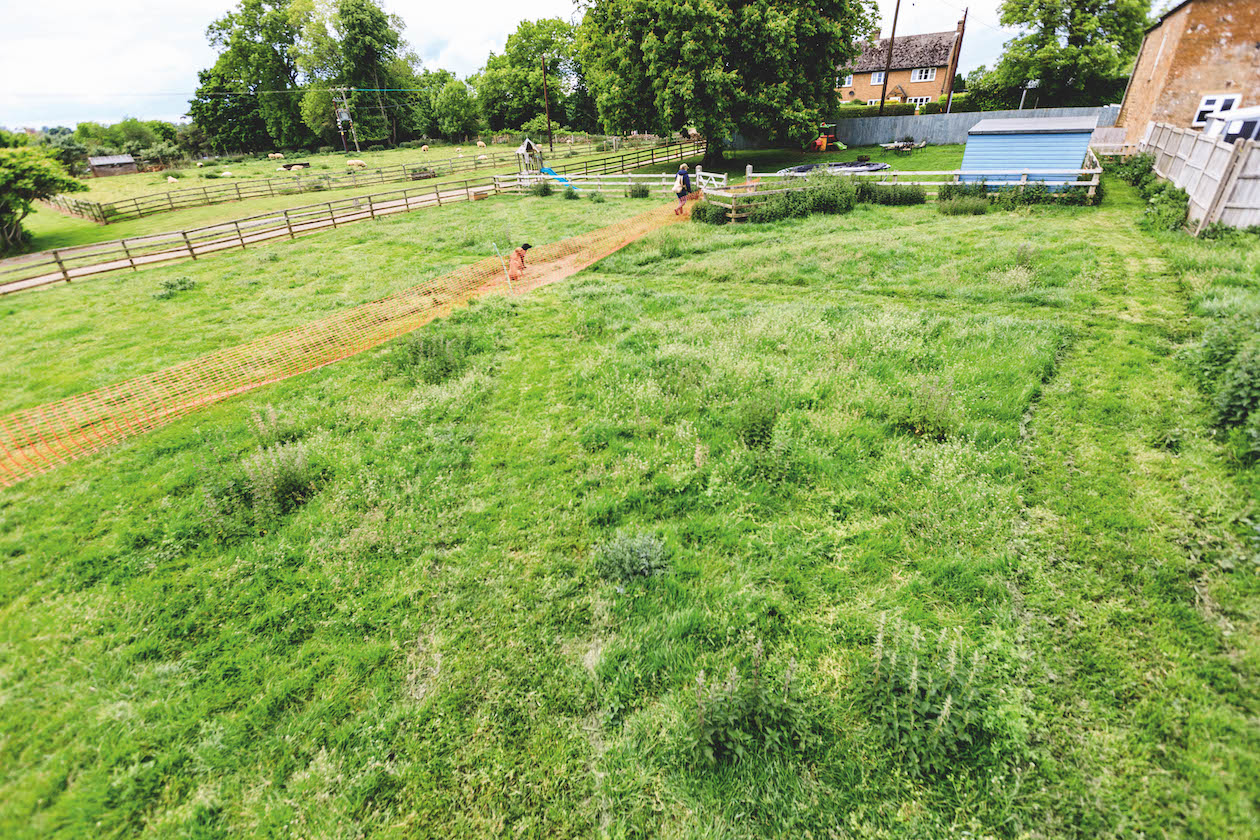 1 I am using a small paddock with long grass and have essentially mown a union jack shape in the grass. This means I have a cross mown in and then two diagonal lines also mown in. This leaves a few patches of longer grass and some inviting tracks for the dogs to run up. Elevated images showing shape of the field and tracks in grass
1 I am using a small paddock with long grass and have essentially mown a union jack shape in the grass. This means I have a cross mown in and then two diagonal lines also mown in. This leaves a few patches of longer grass and some inviting tracks for the dogs to run up. Elevated images showing shape of the field and tracks in grass
When you think of a working gundog, the goals are relatively simple. We need to get the dog to an area and allow it to hunt. This might be hunting at our feet as a beating dog or being sent 180 yards to hunt a specific area. Either way, the task at hand is pretty similar. (Read getting your dog ready for the beating line.)
This is obviously a gundog’s work in its simplest form. Game and quarry should always be picked in a quick and efficient manner for the welfare of the bird, and the convenience of the handler/Gun. A beating dog should be flushing game in a structured and controlled way. Run straight. A beating dog is not much help if it hunts wherever it wants and is unable to push game in the right general direction.
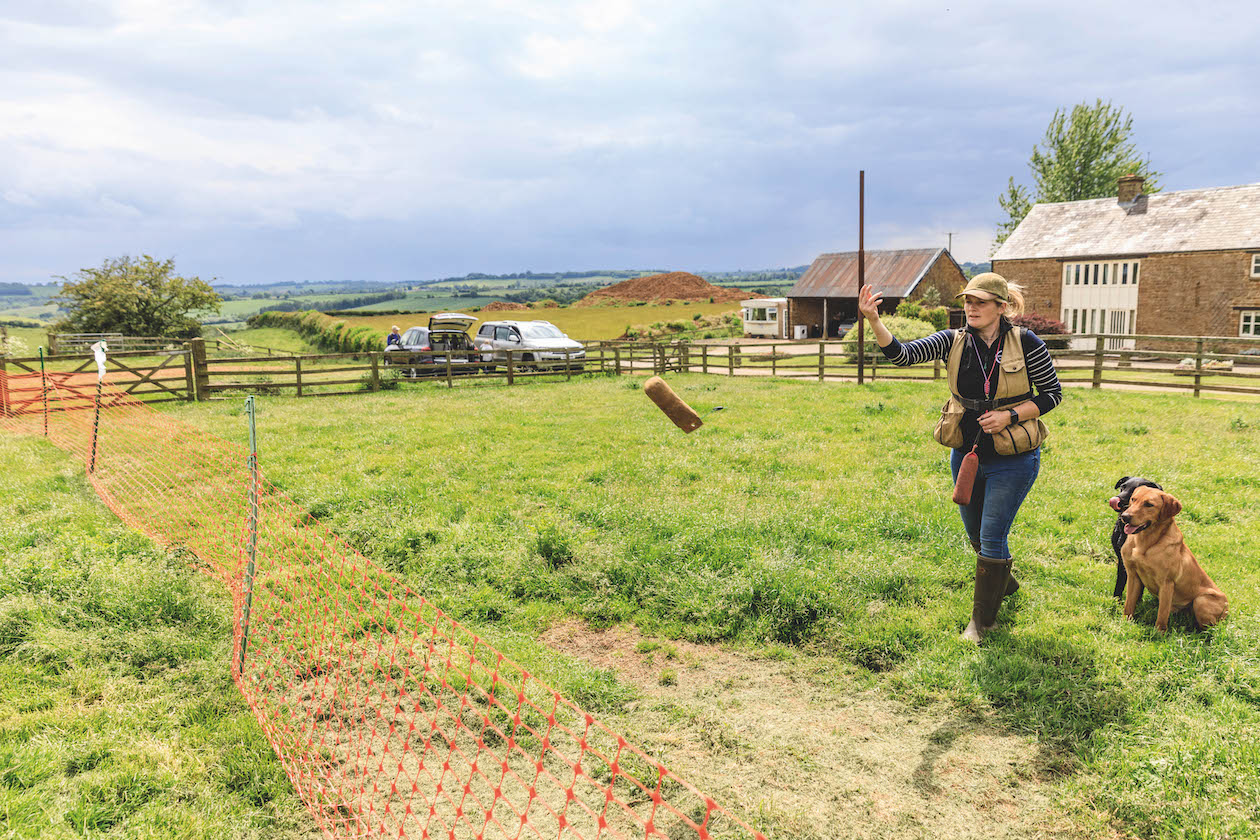
A fence across the paddock poses a different challenge and the dog initially tackles it straight on
Run straight
So the lines and areas of the dog are very important. I have written in the past about how I often use fence lines or perhaps even tramlines to help a dog learn to run a nice straight line. But, as we all know, it is rare that a dog can have a nice track to run up or tramline to help them keep going in the right direction. They need to learn to tackle any obstacle — a fence, cover or a ditch — and know how to either run a line over it or hunt within it.
To help any youngster train to run straight, anyone can make a little set-up at home. All you need is a small garden or paddock and a mower. I am using a small paddock with long grass and have essentially mown a Union flag shape in the grass. A cross has been mown, along with two diagonal lines. This leaves a few patches of longer grass and some inviting tracks for the dogs to run along. The distances are immaterial at this learning stage. It is about accuracy and the dog truly understanding what you are asking.
It is important to remember that all the exercises I am going to go through are not done in one session or even one week. They are done over weeks or even months if necessary, depending on how long it takes my youngsters to become confident with the task in hand. (Read more on taking your time to train your working dog.)
To start with, I do basic memory retrieves across the paddock from one side to another. This might be from top to bottom or across the diagonal. It takes River no time at all to feel confident following these lines.
To begin with, the memory retrieves are placed on the mown grass, meaning they are relatively easy to find. It is so important to remember that the retrieve is his reward and inspiration, so it must happen in a timely manner he can cope with. For example, the more experienced he gets, the longer he can cope with not finding something.
There are several ways to advance this exercise. One way I am using is to put a simple fence straight across the paddock. I send him straight on — sending from top to bottom — to begin with, so he is taking the fence straight on. This is the easiest way to take it.
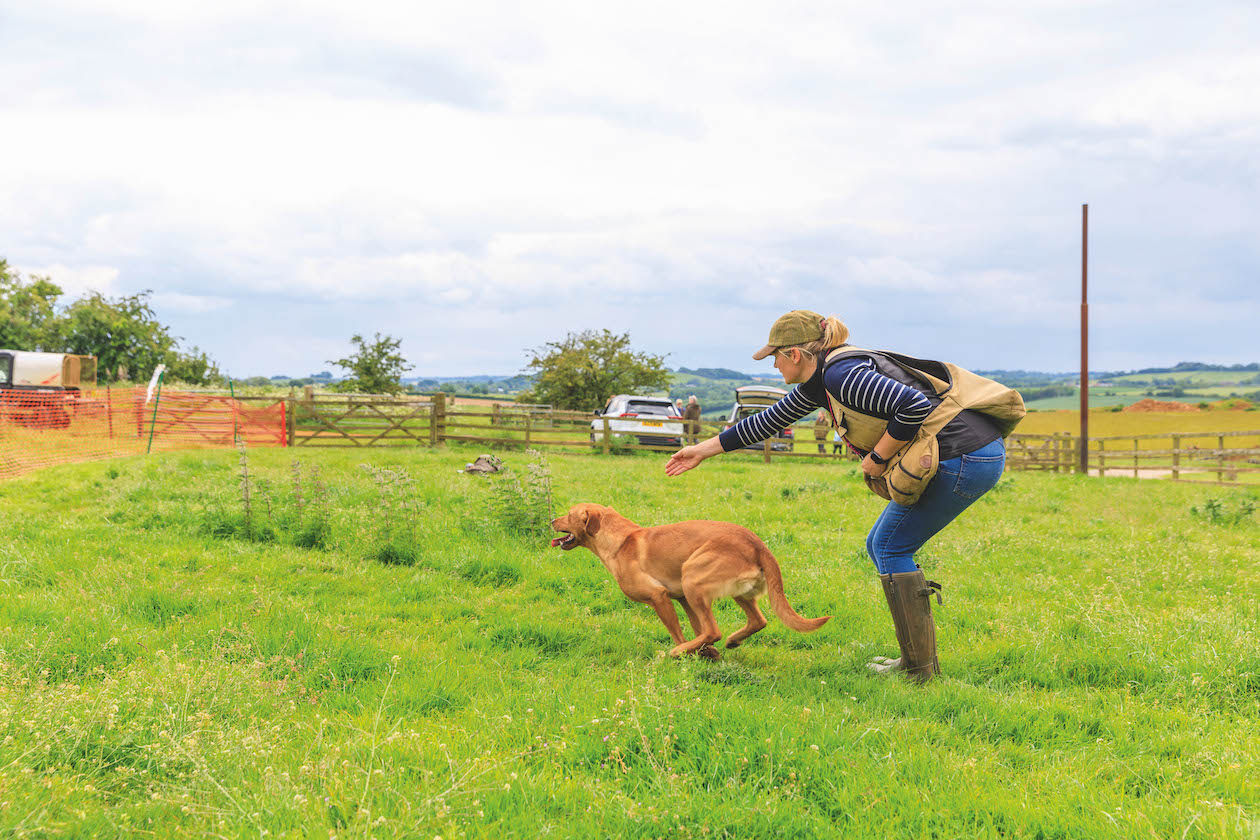
Tackling the fence at an angle poses a tougher test
After that, I send him on a diagonal from one corner to the other. To take a fence at an angle is much harder. If necessary, I will sit him down at one corner and walk to the other and simply call him to me. This should give him the confidence and understanding he needs to be able to take the fence on an angle.
Off course
Another exercise is to use the middle section almost as a junction. When you push a dog right, left or back, it is important they take a nice, straight line. These tracks are ideal for this as it is easy for the dog to get it right, but also very easy for the handler to see if they are veering off course.
I put a memory at the top of the paddock and walk him to the bottom. I cast him out and stop him in the centre of the square. He should remain in that stop until I move him. Take your time with this. Do not rush — give the dog time to take stock and understand the task in hand. Throw a dummy out to one side or the other so it lands on the mown bit of grass 90 degrees to the side of the dog. Move your arm to indicate the direction in which you want them to go. (Read more on using a dummy for gundog training.)
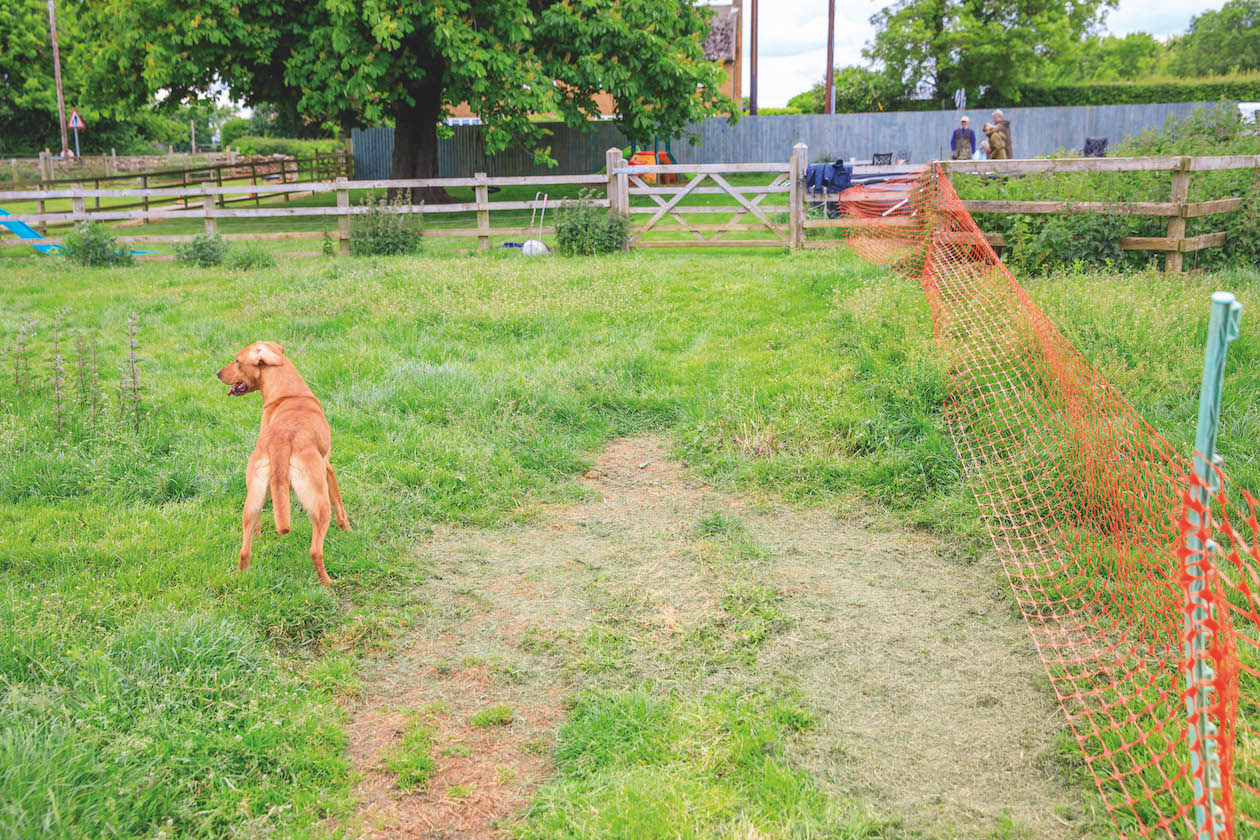
The centre of the paddock serves as a junction; the dog is stopped in the centre and remains there until he is directed left or right to retrieve the dummy
Look at your dog’s body language when you do this. They normally let you know which direction they intend to run long before you cast them. If the dog glances in the direction of the thrown dummy and then back at you, the likelihood is this is the direction they are heading in. If necessary, take a step or two in the direction you are sending them. Your body language needs to be telling them where they are going more than your voice. Cast them calmly and clearly.
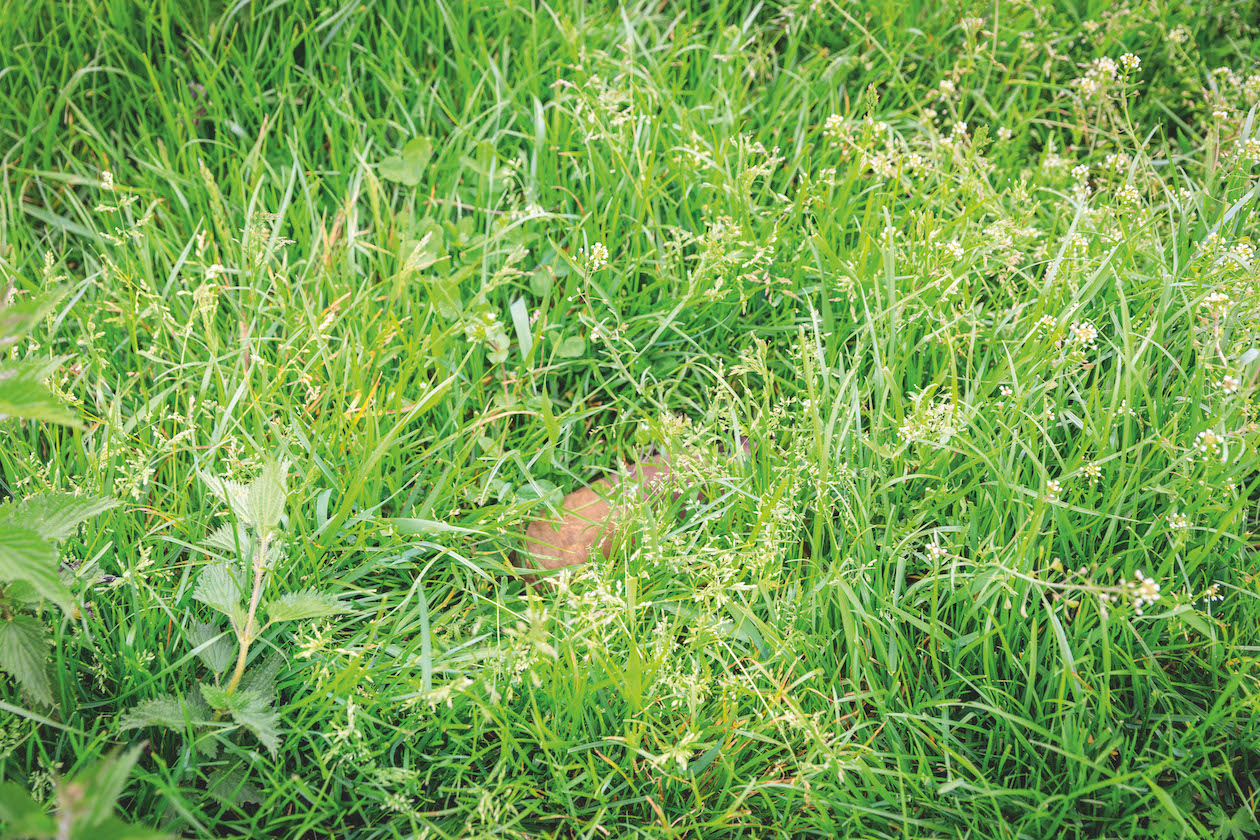
Throwing the retrieve slightly off the mown track means the dog has to hunt a little, rather than simply picking it.
If they take the right line, you can immediately verbally praise so they know that was the correct decision. If they get it wrong, try to interrupt their cast with either a clap or “no” and bring them back to start again. If they persistently get it wrong, make the task simpler by having only one dummy out to the side. Recall the dog towards you, stop them in front of you and cast. They must not persistently go to the incorrect dummy, otherwise they are being rewarded for the wrong thing.
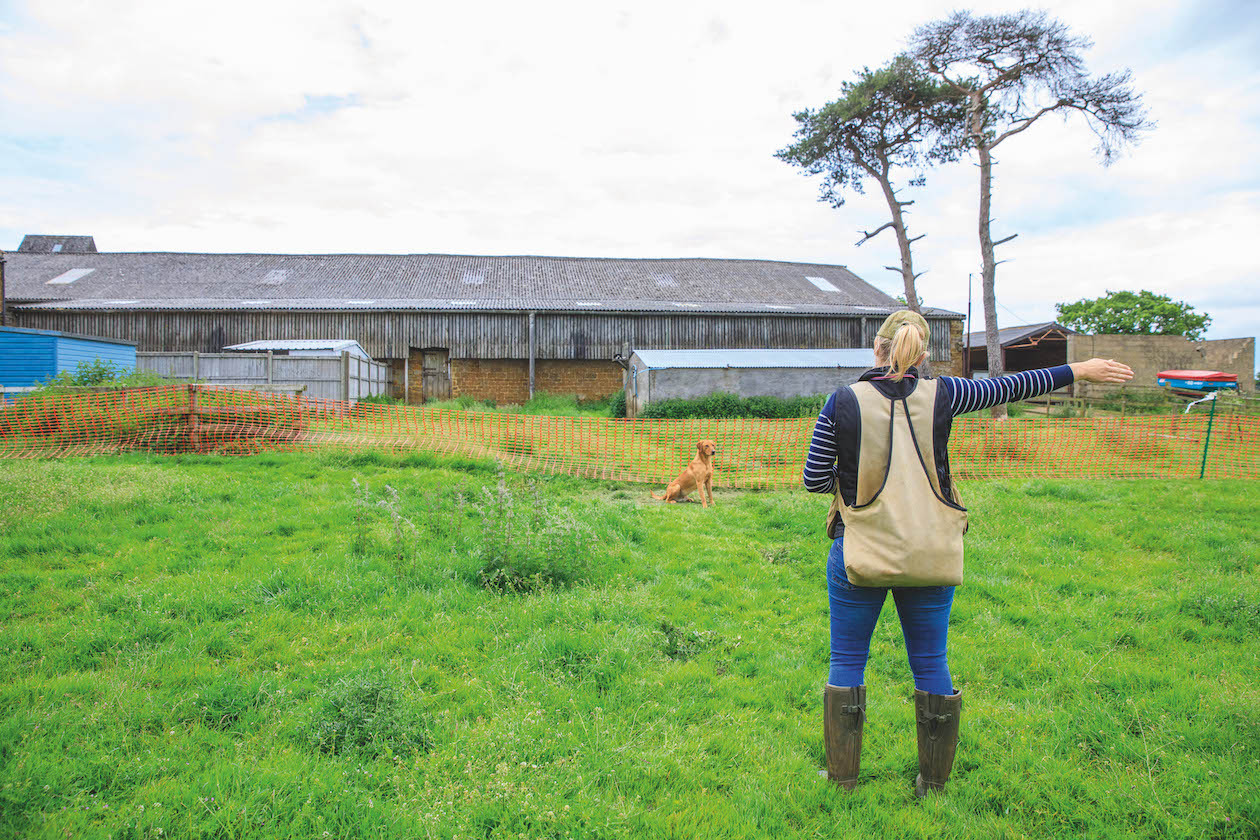
After throwing a dummy onto a mown bit of grass, use your arm to indicate the direction you want them to go
When you try two dummies again, it is a good idea to have someone assist you by putting the dummies out. If the dog goes to the wrong one, get the thrower to pick it up and start again. Remember your dog is learning all of this, so if they make a mistake, the “no” is simply to interrupt them and help them. Never assume the dog is misbehaving or trying to be naughty. They simply do not know.
As the dogs get better and more confident with this, you can start to put the retrieves slightly off the mown track. So instead of getting to the area and simply picking, they have to hunt a little. These small patches of long grass are ideal areas to hunt and for the dog to hold.
If the dog does not hold the area or starts simply running the paddock, break the exercise down. Take them over to one of the areas and let them see you drop a ball or something small in there. Sit them next to it and take a few steps away. Indicate to hunt in that direction and allow them to work. If they leave the area before finding, stop them and start again.

Throwing the retrieve slightly off the mown track means the dog has to hunt a little, rather than simply picking it.
If you find your dog is doing all of these exercises with ease and can reliably run straight, you can begin to make them more technical. For example, if I was working on hunting for the beating line, I would walk up the centre line of the paddock knowing that two of the patches of grass had something to find, but all the others didn’t. I would indicate which direction I wanted the dog to hunt and allow them to hunt that patch.
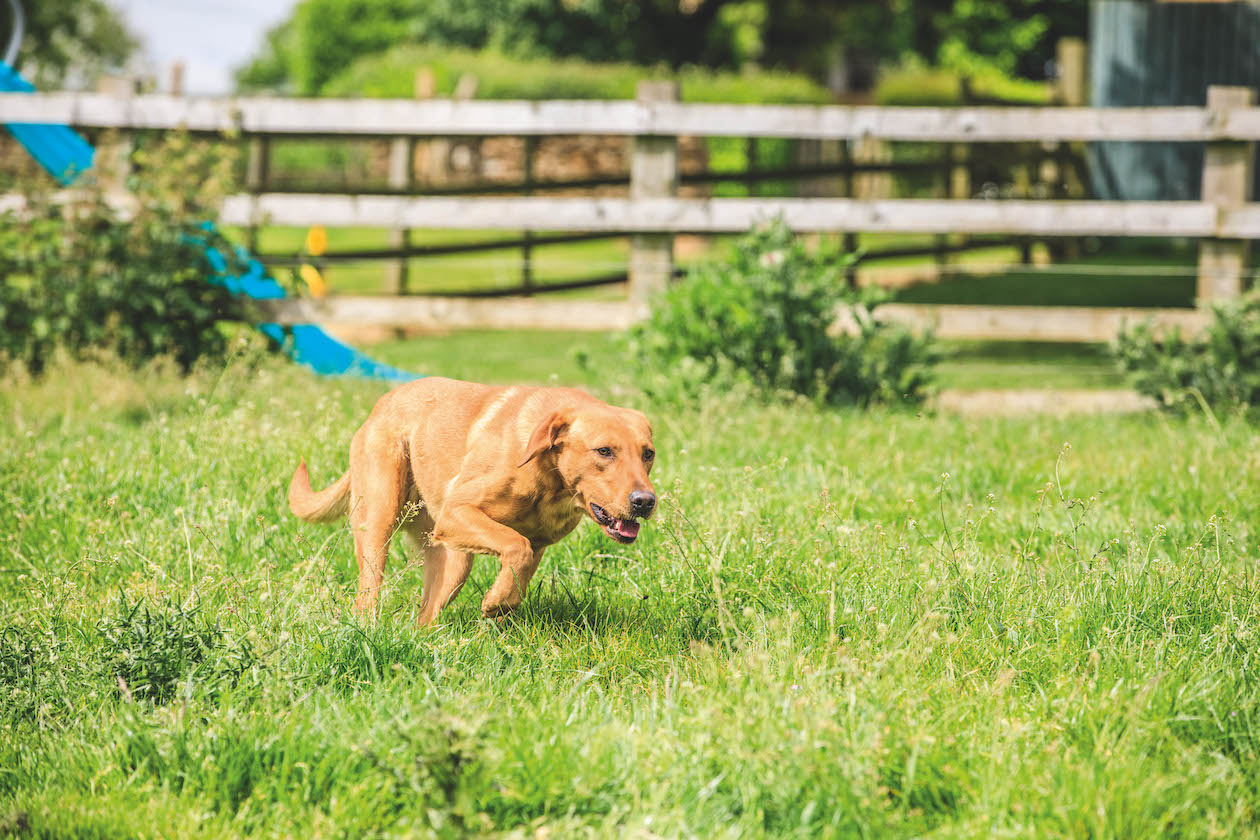
The dog has to hunt for the dummy in the grass
Remember the rough distance a keeper usually wants you from your dog when beating. It is generally not that far as you are often looking to run birds in a certain direction and you will have neighbouring beaters, often with their own dogs. A paddock like this is an ideal and realistic size for a beating line.
I hunt the dog up, encouraging a simple quartering pattern. Obviously, I would expect the dog to hunt and continue hunting until they find something. As I sense the dog getting tired or even flattened slightly at not finding anything, I will indicate for them to hunt somewhere where I know there is a reward. (Read more on quartering here.)
For the retrieving side, I send them on the diagonal over the fence. I stop the dog halfway and then cast left on the opposite diagonal left or right. I ask them to hunt an area where I know there isn’t a retrieve. After 30 seconds or so of hunting, I stop the dog and ask them to hunt the other patch of cover, where there is a retrieve. Or I cast them to a new area where again I know there is a retrieve.
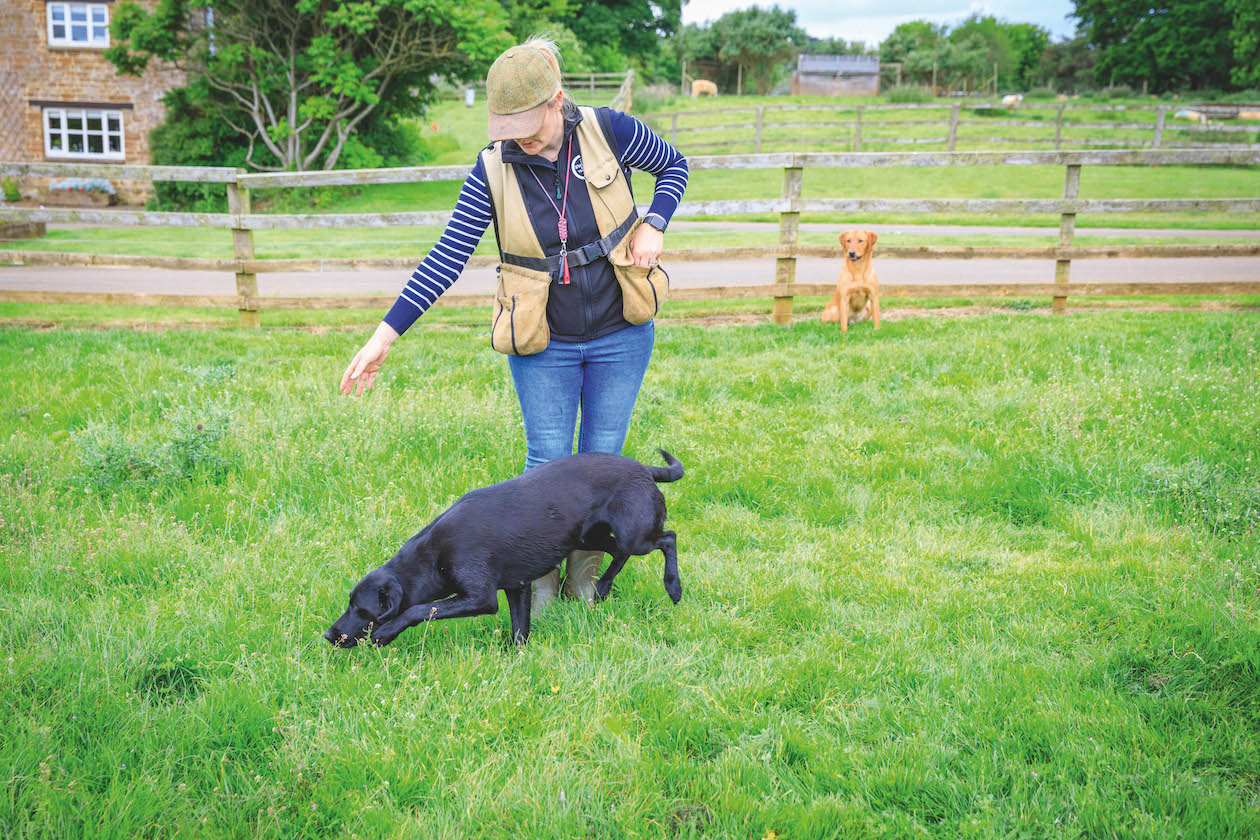
When working on walking in a beating line, show the direction you want the dog to hunt in
These drills are for much more advanced dogs and it is important you do not push a dog to do things like this until they are ready. A simple mown area like this can be so valuable for any level of dog learning any trade and has proved really helpful for River and Briar.
Keeping them ticking over
During the season, our dogs are kept occupied with the roles they play in the shooting field. While training will continue in a limited form, because of their work, keeping them entertained is relatively easy. Once the season is finished, however, many of us turn to other means to keep them fit and sharp. The most important thing is to know your dog and what their drive is like to select a routine that suits them. Each discipline requires a different ability but at least one will suit any breed, and give them a break from shooting while continuing to sharpen certain skills and keep them fit.
Agility
Agility
Agility is a fast, exciting and technical sport. Some trainers will advise that training for agility will undo gundog work, but I am of the opposite opinion. The jumping helps keep them fit and nimble, using similar muscles as when they are working. The contacts — the areas the dogs must touch — are great for their balance, coordination and learning to work independently.
What I love about agility is it teaches a stop at the end of the contacts. This skill is easily transferable to gundog work with a stop whistle. Another reason why I believe agility to be good for some gundogs is it teaches them to focus on you, among maximum distractions of other dogs and handlers. A common problem a lot of novice gundogs struggle with is focusing around exciting stimuli. So this can be a great opportunity to practise.
A good task to learn
Home training
An owner can also look at training at home to keep the dog occupied. A common pastime of the shooting fraternity during the summer months is pigeon shooting. This is a great way to teach your dog patience while sitting in a hide. Many might not get this opportunity or, like me, be unable to attend days on end of pigeon shooting. I teach mine tasks around the house that they can do on a daily basis. These can be simple but helpful jobs such as collecting the post, helping carry shopping in from the car.
Or even something like unloading the washing machine — I taught Nala how to do this when I was heavily pregnant and she was getting bored. Other sports and hobbies that are great for working gundogs are CaniCross, competitive obedience, flyball, tracking or working trials.
Scent work
Scent work
Another favourite of mine is scent work. This is where the dog is given an area such as a car or room and asked to search it. There will be certain scents or articles laid that the dog is required to find then indicate to the owner. I find dogs that do not enjoy retrieving dummies often excel at this. There is no retrieving involved, simply using their noses. This means that the skills again are totally transferable to the shooting field. It is also a fun sport and an easy one to train at home, and can take place indoors or outdoors.
Any working gundog is required to use its nose to hunt and flush, track or retrieve game, which means if they are well practised at using their noses already, it sets them up very well for the shooting field.
Working tests
The most common and obvious sport to take part in is working tests. Obviously, all of the skills are transferable to what you would use on a shoot day. So for those concerned or wishing to polish their gundog’s skills this is ideal. It does not matter if you have a labrador, spaniel or HPR — your dog can compete in the most suitable genre for their breed. (Read more on working tests and trials here.)
Working tests are done using dummies and often blank shot fire or a starter pistol to simulate a gun. Working tests are for dogs that are registered with the Kennel Club, so crosses or non-registered dogs cannot compete. However, there are also scurries which can include any dog. These mostly take part at country fairs but training at home can be as often you like.
Many dogs relish the tests but some are not convinced that a bag of sand is exciting enough to work for.
Related Articles
Get the latest news delivered direct to your door
Subscribe to Shooting Times & Country
Discover the ultimate companion for field sports enthusiasts with Shooting Times & Country Magazine, the UK’s leading weekly publication that has been at the forefront of shooting culture since 1882. Subscribers gain access to expert tips, comprehensive gear reviews, seasonal advice and a vibrant community of like-minded shooters.
Save on shop price when you subscribe with weekly issues featuring in-depth articles on gundog training, exclusive member offers and access to the digital back issue library. A Shooting Times & Country subscription is more than a magazine, don’t just read about the countryside; immerse yourself in its most authoritative and engaging publication.







